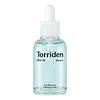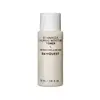What's inside
What's inside
 Key Ingredients
Key Ingredients

 Benefits
Benefits

 Concerns
Concerns

 Ingredients Side-by-side
Ingredients Side-by-side

Water
Skin ConditioningButylene Glycol
HumectantGlycerin
HumectantDipropylene Glycol
Humectant1,2-Hexanediol
Skin ConditioningPanthenol
Skin ConditioningSodium Hyaluronate
HumectantHydrolyzed Hyaluronic Acid
HumectantSodium Acetylated Hyaluronate
HumectantSodium Hyaluronate Crosspolymer
HumectantHydrolyzed Sodium Hyaluronate
Skin ConditioningAllantoin
Skin ConditioningTrehalose
HumectantBetaine
HumectantPropanediol
SolventPortulaca Oleracea Extract
Skin ConditioningHamamelis Virginiana Extract
AntiseborrhoeicMadecassoside
AntioxidantMadecassic Acid
Skin ConditioningCeramide NP
Skin ConditioningBeta-Glucan
Skin ConditioningMalachite Extract
AntioxidantCholesterol
EmollientPentylene Glycol
Skin ConditioningGlyceryl Acrylate/Acrylic Acid Copolymer
HumectantPvm/Ma Copolymer
Emulsion StabilisingPolyglyceryl-10 Laurate
Skin ConditioningXanthan Gum
EmulsifyingTromethamine
BufferingCarbomer
Emulsion StabilisingEthylhexylglycerin
Skin ConditioningScutellaria Baicalensis Root Extract
AstringentPaeonia Suffruticosa Root Extract
Skin ProtectingWater, Butylene Glycol, Glycerin, Dipropylene Glycol, 1,2-Hexanediol, Panthenol, Sodium Hyaluronate, Hydrolyzed Hyaluronic Acid, Sodium Acetylated Hyaluronate, Sodium Hyaluronate Crosspolymer, Hydrolyzed Sodium Hyaluronate, Allantoin, Trehalose, Betaine, Propanediol, Portulaca Oleracea Extract, Hamamelis Virginiana Extract, Madecassoside, Madecassic Acid, Ceramide NP, Beta-Glucan, Malachite Extract, Cholesterol, Pentylene Glycol, Glyceryl Acrylate/Acrylic Acid Copolymer, Pvm/Ma Copolymer, Polyglyceryl-10 Laurate, Xanthan Gum, Tromethamine, Carbomer, Ethylhexylglycerin, Scutellaria Baicalensis Root Extract, Paeonia Suffruticosa Root Extract
Echinacea Purpurea Extract 40.5%
MoisturisingChamaecyparis Obtusa Water
MaskingButylene Glycol
HumectantDipropylene Glycol
HumectantGlycerin
Humectant1,2-Hexanediol
Skin ConditioningNiacinamide
SmoothingGlycereth-26
HumectantPropanediol
SolventWater
Skin ConditioningCarbomer
Emulsion StabilisingDiphenyl Dimethicone
EmollientTromethamine
BufferingTriethylhexanoin
MaskingTricholoma Matsutake Extract
Skin ConditioningFragaria Vesca Leaf Extract
AstringentEthylhexylglycerin
Skin ConditioningGlycereth-25 PCA Isostearate
EmulsifyingRhododendron Chrysanthum Leaf Extract
MaskingHydrolyzed Cicer Seed Extract
Skin ProtectingAdenosine
Skin ConditioningPolyglyceryl-10 Oleate
Skin ConditioningHydrogenated Lecithin
EmulsifyingHydrolyzed Hyaluronic Acid
HumectantHyaluronic Acid
HumectantSodium Hyaluronate
HumectantDisodium EDTA
Dipotassium Phosphate
BufferingAcetyl Glutamine
Skin ConditioningMusa Sapientum Fruit Extract
Skin ConditioningHedera Helix Leaf/Stem Extract
AntimicrobialTheobroma Cacao Extract
Skin ConditioningCocos Nucifera Oil
MaskingFragaria Chiloensis Fruit Extract
Skin ConditioningGardenia Florida Fruit Extract
Skin ConditioningOsmanthus Fragrans Flower Extract
MaskingAmyris Balsamifera Bark Oil
MaskingCellulose Gum
Emulsion StabilisingEchinacea Purpurea Extract 40.5%, Chamaecyparis Obtusa Water, Butylene Glycol, Dipropylene Glycol, Glycerin, 1,2-Hexanediol, Niacinamide, Glycereth-26, Propanediol, Water, Carbomer, Diphenyl Dimethicone, Tromethamine, Triethylhexanoin, Tricholoma Matsutake Extract, Fragaria Vesca Leaf Extract, Ethylhexylglycerin, Glycereth-25 PCA Isostearate, Rhododendron Chrysanthum Leaf Extract, Hydrolyzed Cicer Seed Extract, Adenosine, Polyglyceryl-10 Oleate, Hydrogenated Lecithin, Hydrolyzed Hyaluronic Acid, Hyaluronic Acid, Sodium Hyaluronate, Disodium EDTA, Dipotassium Phosphate, Acetyl Glutamine, Musa Sapientum Fruit Extract, Hedera Helix Leaf/Stem Extract, Theobroma Cacao Extract, Cocos Nucifera Oil, Fragaria Chiloensis Fruit Extract, Gardenia Florida Fruit Extract, Osmanthus Fragrans Flower Extract, Amyris Balsamifera Bark Oil, Cellulose Gum
 Reviews
Reviews

Ingredients Explained
These ingredients are found in both products.
Ingredients higher up in an ingredient list are typically present in a larger amount.
1,2-Hexanediol is a synthetic liquid and another multi-functional powerhouse.
It is a:
- Humectant, drawing moisture into the skin
- Emollient, helping to soften skin
- Solvent, dispersing and stabilizing formulas
- Preservative booster, enhancing the antimicrobial activity of other preservatives
Butylene Glycol (or BG) is used within cosmetic products for a few different reasons:
Overall, Butylene Glycol is a safe and well-rounded ingredient that works well with other ingredients.
Though this ingredient works well with most skin types, some people with sensitive skin may experience a reaction such as allergic rashes, closed comedones, or itchiness.
Learn more about Butylene GlycolCarbomer is a polymer of acrylic acid. Its main role is to create a gel consistency.
A high amount of carbomer can cause pilling or balling up of products. Don't worry, most products contain 1% or less of carbomer.
Dipropylene Glycol is a synthetically created humectant, stabilizer, and solvent.
This ingredient helps:
Dipropylene glycol is technically an alcohol, but it belongs to the glycol family (often considered part of the ‘good’ alcohols). This means it is hydrating and gentle on skin unlike drying solvent alcohols like denatured alcohol.
As a masking agent, Dipropylene Glycol can be used to cover the smell of other ingredients. However, it does not have a scent.
Studies show Dipropylene Glycol is considered safe to use in skincare.
Learn more about Dipropylene GlycolEthylhexylglycerin (we can't pronounce this either) is commonly used as a preservative and skin softener. It is derived from glyceryl.
You might see Ethylhexylglycerin often paired with other preservatives such as phenoxyethanol. Ethylhexylglycerin has been found to increase the effectiveness of these other preservatives.
Glycerin is already naturally found in your skin. It helps moisturize and protect your skin.
A study from 2016 found glycerin to be more effective as a humectant than AHAs and hyaluronic acid.
As a humectant, it helps the skin stay hydrated by pulling moisture to your skin. The low molecular weight of glycerin allows it to pull moisture into the deeper layers of your skin.
Hydrated skin improves your skin barrier; Your skin barrier helps protect against irritants and bacteria.
Glycerin has also been found to have antimicrobial and antiviral properties. Due to these properties, glycerin is often used in wound and burn treatments.
In cosmetics, glycerin is usually derived from plants such as soybean or palm. However, it can also be sourced from animals, such as tallow or animal fat.
This ingredient is organic, colorless, odorless, and non-toxic.
Glycerin is the name for this ingredient in American English. British English uses Glycerol/Glycerine.
Learn more about GlycerinHydrolyzed Hyaluronic Acid is a form of hyaluronic acid. It is created by the hydrolysis of hyaluronic acid with a high molecular weight. Once created, Hydrolyzed Hyaluronic Acid has a low molecular weight.
Low molecular weight HA has been shown to hydrate and increase elasticity of the skin. Increasing elasticity is also associated with reduction of wrinkle depth.
One study found topical low molecular weight hyaluronic acid may be considered for the treatment of rosacea in the adult population. However, we always recommend speaking with a professional about your skin concerns.
Hyaluronic acids are a humectant. This means they draw moisture from the air. Hyaluronic acids help moisturize, soothe, and protect the skin.
Read more about other common forms of hyaluronic acid:
Learn more about Hydrolyzed Hyaluronic AcidPropanediol is an all-star ingredient. It softens, hydrates, and smooths the skin.
It’s often used to:
Propanediol is not likely to cause sensitivity and considered safe to use. It is derived from corn or petroleum with a clear color and no scent.
Learn more about PropanediolSodium Hyaluronate is hyaluronic acid's salt form. It is commonly derived from the sodium salt of hyaluronic acid.
Like hyaluronic acid, it is great at holding water and acts as a humectant. This makes it a great skin hydrating ingredient.
Sodium Hyaluronate is naturally occurring in our bodies and is mostly found in eye fluid and joints.
These are some other common types of Hyaluronic Acid:
Learn more about Sodium HyaluronateTromethamine helps balance the pH and improve the texture of a product. It is synthetically created.
As an emulsifier, Tromethamine prevents oil and water ingredients from separating. This helps stabilize the product and elongate a product's shelf life. Tromethamine also makes a product thicker.
Tromethamine helps balance the pH level of a product. Normal pH level of skin is slightly acidic (~4.75-5.5). The acidity of our skin is maintained by our glands and skin biome. Being slightly acidic allows our skin to create an "acid mantle". This acid mantle is a thin barrier that protects our skin from bacteria and contaminants.
Oral Tromethanmine is an anti-inflammatory drug but plays the role of masking, adding fragrance, and/or balancing pH in skincare.
1,3-Propanediol, 2-amino-2-(hydroxymethyl)-
Learn more about TromethamineWater. It's the most common cosmetic ingredient of all. You'll usually see it at the top of ingredient lists, meaning that it makes up the largest part of the product.
So why is it so popular? Water most often acts as a solvent - this means that it helps dissolve other ingredients into the formulation.
You'll also recognize water as that liquid we all need to stay alive. If you see this, drink a glass of water. Stay hydrated!
Learn more about Water